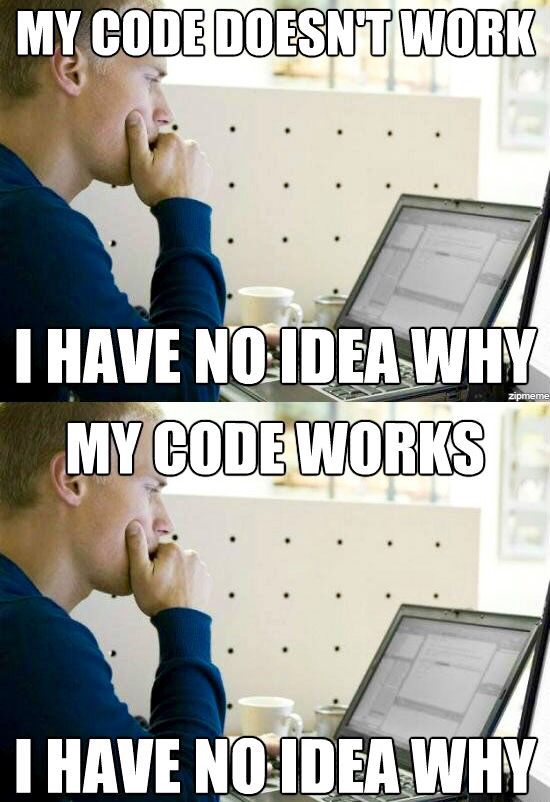RMarkdown Basics
Recap
- Reproducibility across all sciences is a huge issue!
- We need to be able to reproduce scientific findings
- This means the data & code from a given paper must be easy to access and human readable
- When it comes to programming in
R, using RMarkdown can help us make sure that other humans can understand our analyses
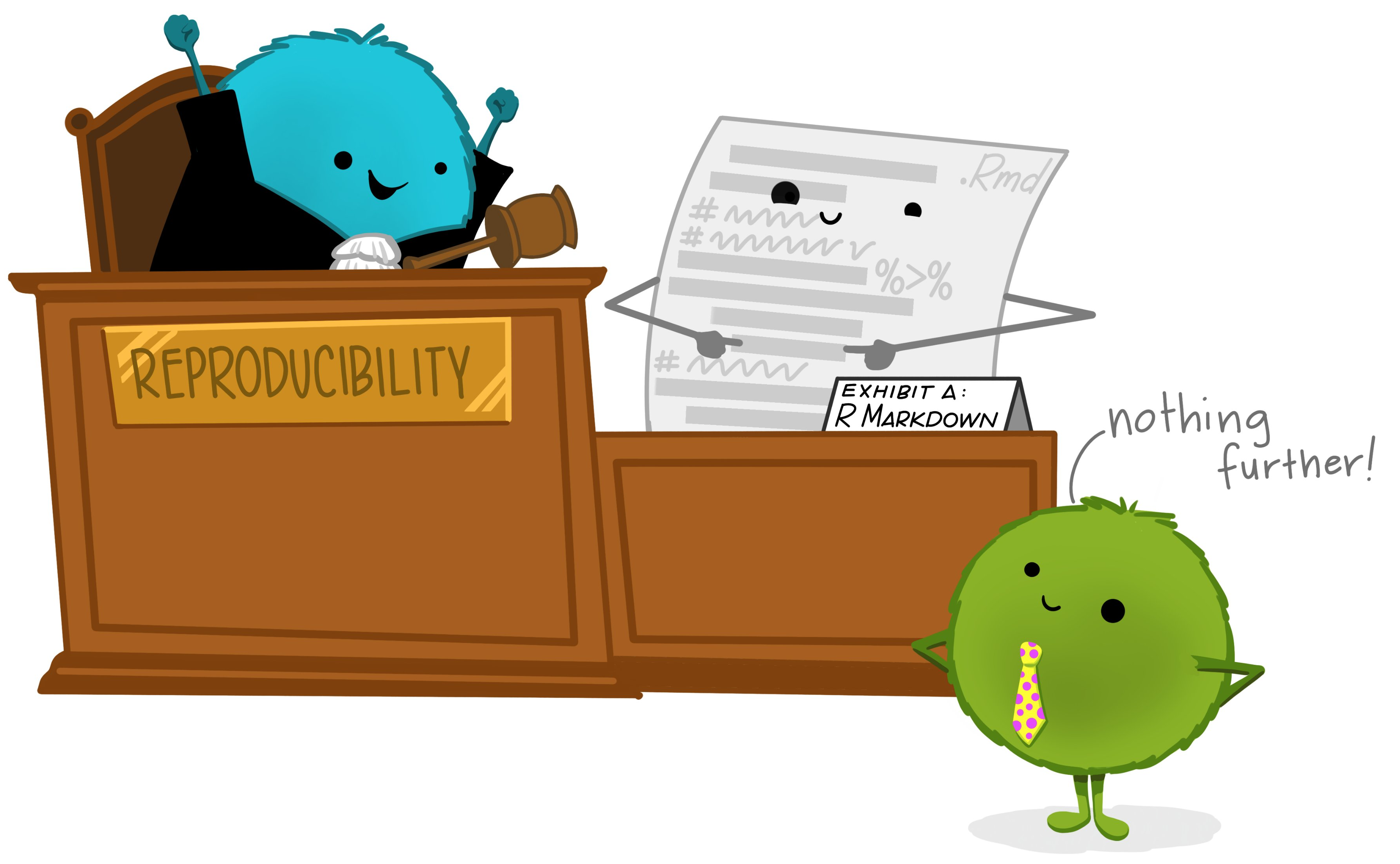
Artwork by Allison Horst
Anatomy of RNotebook
The anatomy of all .Rmd files (RNotebook or RMarkdown):
1. Document Information
2. Formatted Text
3. Code Chunks
Anatomy of RNotebook
The anatomy of all .Rmd files (RNotebook or RMarkdown):
1. Document Information
2. Formatted Text
3. Code Chunks
Document Information
- Title
- Subtitle
- Date
- Author
- Output type
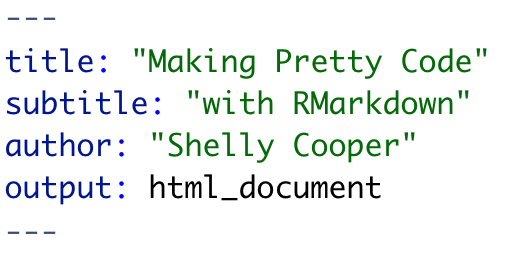
This is sometimes called a YAML header.
Document Information
- Title
- Subtitle
- Date
- Author
- Output type
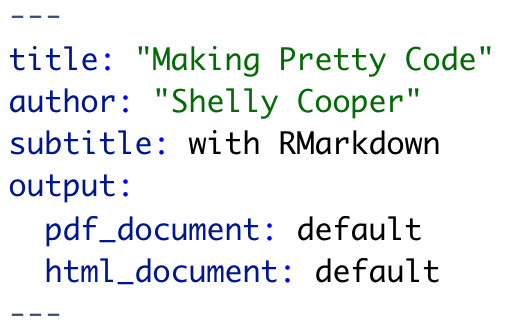
IMPORTANT: Do NOT change any of the tabs/indents in the YAML header. If you copy something from the internet, pay attention to this!
Anatomy of RNotebook
The anatomy of all .Rmd files (RNotebook or RMarkdown):
1. Document Information
2. Formatted Text
3. Code Chunks
Formatted Text
You need to tell R how you want your text to be formatted:
- Headers
- Bolded text
- Italicized text
- Hyperlinks
- Bullet/numbered lists
Headers
The number of # indicates what size and level your header should be.
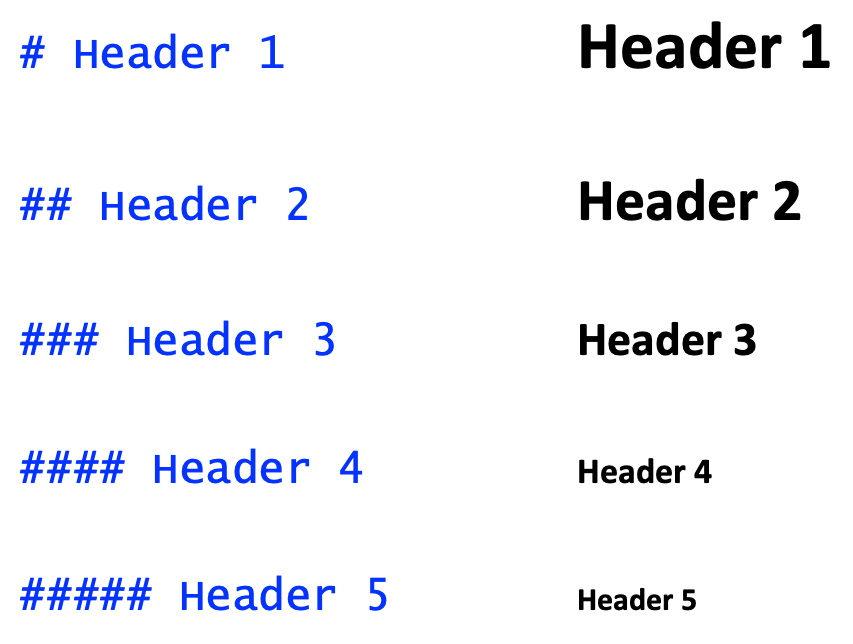
Headers
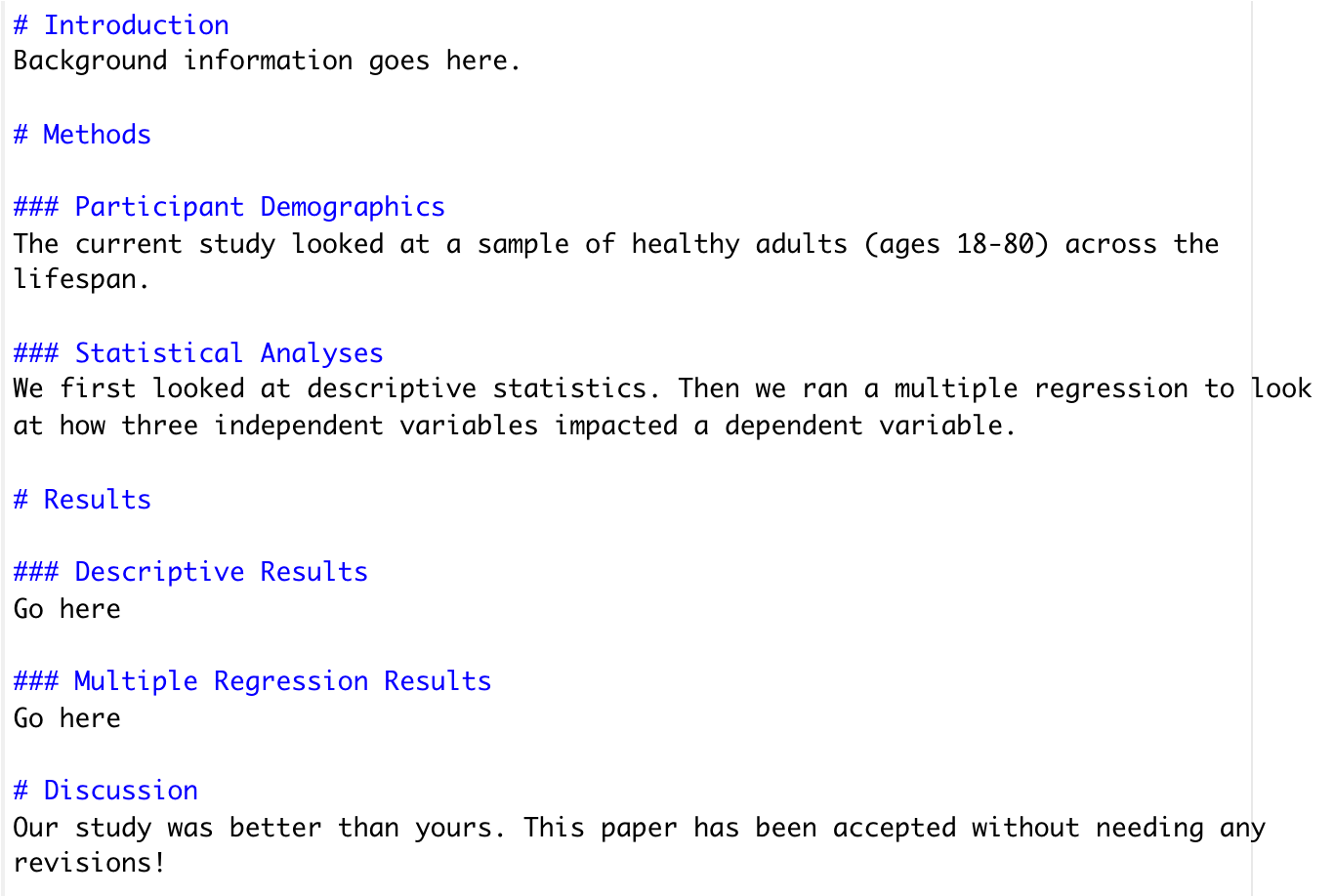
Headers

Bold & Italics
Bold text
- **bold text **
- __bold text __ (2 underscores)
Italicized text
- * italicized text *
- _ italicized text _
To combine, pick * for one and _ for the other
- **_combine_**
- _**combine**_
- *__combine__*
- __*combine*__
Hyperlinks
The word(s) you want to be the link go inside square brackets
[ ]Immediately after, it's a pair of parentheses
( )that contains the actual link.
Bullet Lists - Unordered
- First line must end with a
:(colon) - Must have an empty line
- Must have a space after the bullet
Unformatted
Brazilian States:
- Rio Grande do Sul- Parana- Rio de Janeiro
Formatted
Brazilian States:
- Rio Grande do Sul
- Parana
- Rio de Janeiro
Bullets can be - (dashes), + (plus), or * (asterisk), but all come out looking like what you see here.
Bullet Lists - Ordered
Same thing, but now with numbers
Unformatted
Brazilian States:
1. Rio Grande do Sul2. Parana3. Rio de Janeiro
Formatted
Brazilian States:
- Rio Grande do Sul
- Parana
- Rio de Janeiro
Bullet Lists - Nested
You can have organized, nested lists. Go to the next line, and press 2 spaces. Then put your new bullet symbol.
- Do NOT press tab. For whatever reason, R doesn't like it for Markdown.
- If you still are stuck, try 4 spaces -- that should work
Unformatted
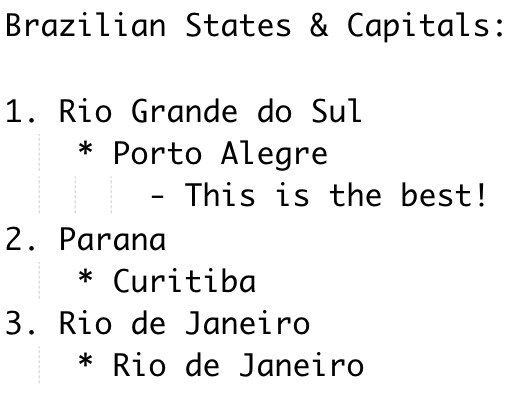
Formatted
Brazilian States & Capitals:
- Rio Grande do Sul
- Porto Alegre
- This is the best!
- Porto Alegre
- Parana
- Curitiba
- Rio de Janeiro
- Rio de Janeiro
Anatomy of RNotebook
The anatomy of all .Rmd files (RNotebook or RMarkdown):
1. Document Information
2. Formatted Text
3. Code Chunks
Code Chunks
- This is what makes RMarkdown so cool!
- Type your code directly into a code chunk and work with it just like you would a
.Rscript file - When you're done, click knit at the top to generate your pretty report
- All code chunks will be executed (unless you say otherwise...see next lecture)
Code Chunks
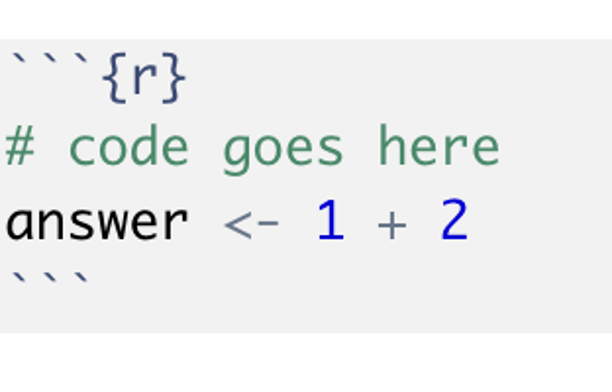
Each code chunk:
- Starts and ends with three backticks
- if you don't have the ending 3, you're gonna have a bad time
- Has
{r}at top next to the first 3 backticks - Has gray background
- Looks like normal code
- Runs like normal code
Making Code Chunks
To make a code chunk:
- Use the
insertbutton - Manually type the backticks &
{r} - Keyboard shortcuts
- PCs: ctrl + alt + i
- Macs: cmd + opt + i
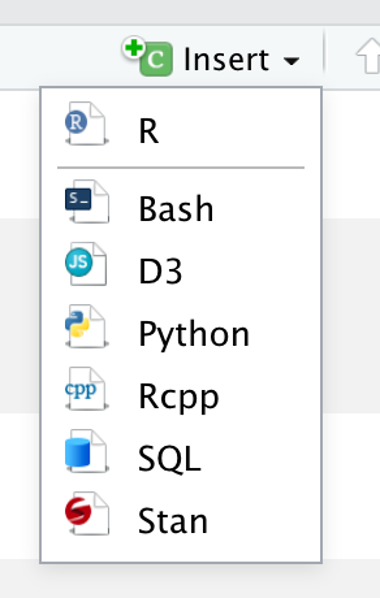
A finished product

Code Chunks
All code will run in a code chunk
- It's very literal!
- We can't see
midusormean_age- These are stored as objects
- If you want to see them, you need to tell R to show them to you
- We needed to import
midus- If it was in your Environment before knitting the file AND you did not import your data, it would fail
- Whatever data you use, you need to import it!
Viewing data.frames
To help make data.frames readable for humans, use the kable() function
- comes from the
knitrpackage, although surprisingly, you don't need to manually load this one
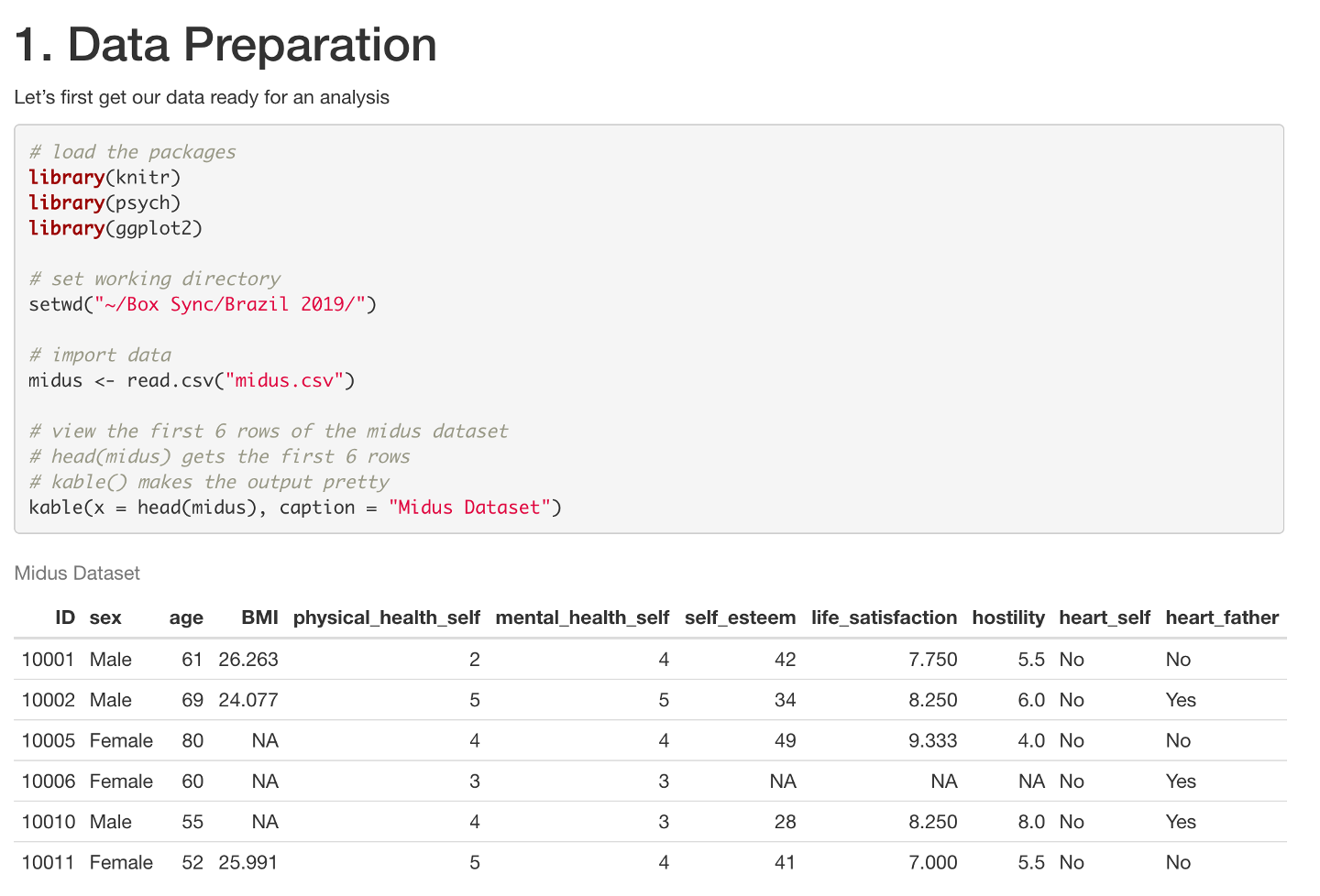
Next up
Chaning parameters in the YAML header and in code chunks to make the output just right.
